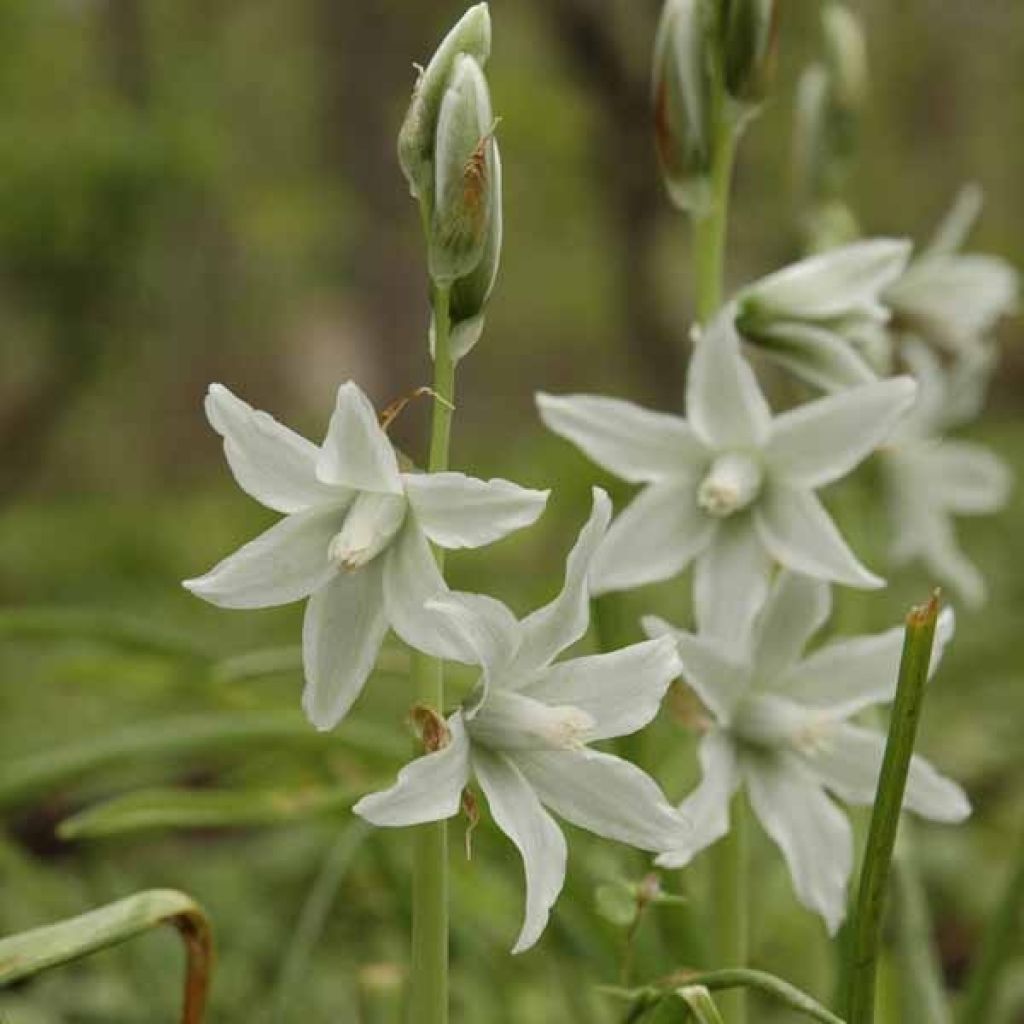

Ornithogalum nutans
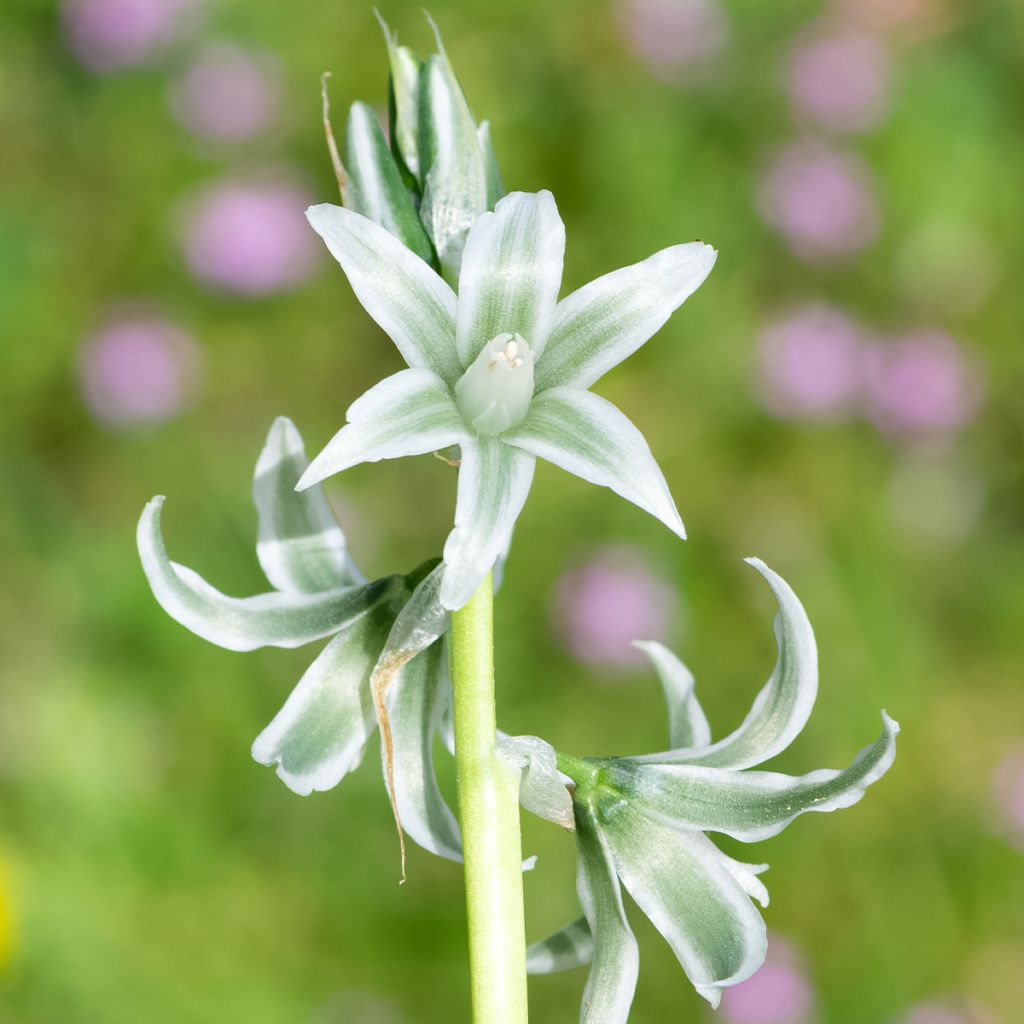

Ornithogalum nutans


Ornithogalum nutans
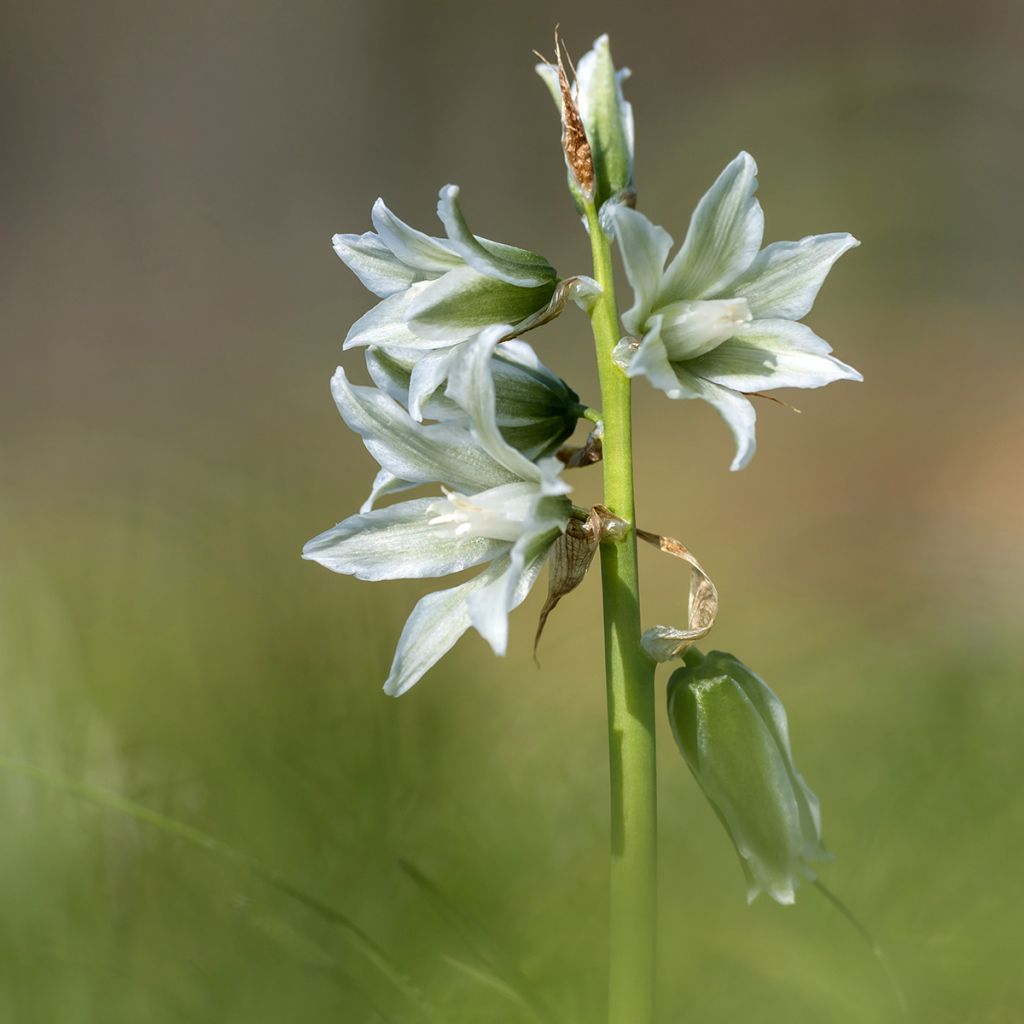

Ornithogalum nutans
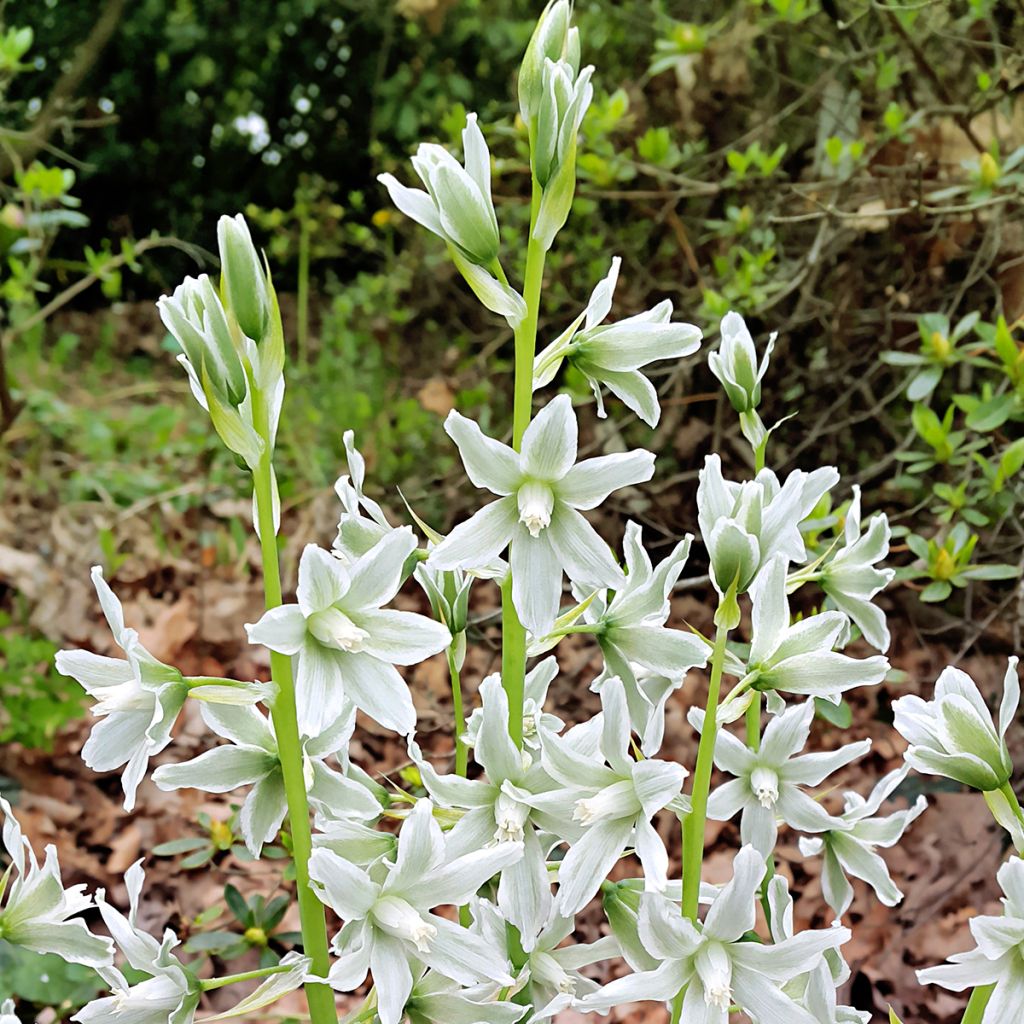

Ornithogalum nutans


Ornithogalum nutans
Ornithogalum nutans
Ornithogalum nutans
Drooping star of Bethlehem, Nodding star of Bethlehem, Weeping star of Bethlehem
Hello, I really found it unfortunate to have to search for each individual plant to find planting information - exposure / soil / etc - your general information is not sufficient. All plants are fine otherwise. Natalie
Natalie N., 10/01/2017
Special offer!
Receive a €20 voucher for any order over €90 (excluding delivery costs, credit notes, and plastic-free options)!
1- Add your favorite plants to your cart.
2- Once you have reached €90, confirm your order (you can even choose the delivery date!).
3- As soon as your order is shipped, you will receive an email containing your voucher code, valid for 3 months (90 days).
Your voucher is unique and can only be used once, for any order with a minimum value of €20, excluding delivery costs.
Can be combined with other current offers, non-divisible and non-refundable.
This plant carries a 6 months recovery warranty
More information
We guarantee the quality of our plants for a full growing cycle, and will replace at our expense any plant that fails to recover under normal climatic and planting conditions.


Would this plant suit my garden?
Set up your Plantfit profile →
Description
Ornithogalum nutans is a graceful bulbous plant from warm climates, bearing large flowers with 6 petals. The flowers are silver-white on the outside and greenish on the inside. The flowers are carried by long stems measuring 40cm (16in). The plant is robust and will naturalise in favourable conditions. It prefers rather calcareous, poor, rocky, well-drained soils. This reliable plant is ideal in flower beds, rockeries, and pots.
Ornithogalum nutans, known as the drooping star of Bethlehem, belongs to the Asparagaceae family (it was formerly classified in the Liliaceae family). This species is native to southern Europe. It is also sometimes called Honorius nutans. It can be found in warm and stony places, such as dry meadows, vineyards, and woodlands, in limestone soil. The plant forms an ovate bulb, buried shallowly. Between March and May, this bulb produces long, bright green ribbon-like leaves, which are arched and quite flexible. They measure up to 40cm (16in) in length. They are quickly followed by an elongated flowering stem, reaching between 30 and 50cm (12 and 20in), bearing 10 to 15 flowers with a diameter of 3 to 4cm (1 to 2in). The flowers are slightly drooping. They are often clustered on the same side of the stem. The flowers bear 6 silvery-white pointed petals that are strongly marked with green on the inside. These 6 "petals" are 3 sepals and 3 true petals of the same appearance, collectively referred to as tepals.
It is a robust and reliable plant, with a simple and wild character. Very hardy despite its Mediterranean origins, it can withstand temperatures as low as -15°C (5°F) without any problems. Its main enemy is humidity. Heavy and clayey soil can easily cause the bulbs to rot. It is best to plant the bulbs in a warm, even stony, and preferably calcareous location, such as a dry border, a rock garden, or a lean meadow. If your soil tends to be too wet, try planting it at the base of a south or southwest-facing wall, adding draining materials such as pumice. It tolerates poor soils. It naturalises very easily once the conditions are met, with its flowers multiplying every year.
The foliage disappears just after flowering, which tends to leave a space in the flower bed. You can hide this gap with a leafy plant, such as a Erodium chrysanthum. Other rock garden plants like the rambling anthericum (which flowers in June-July), 'Elfenbeinglanz' rock rose, or Karvinski daisy will also make good companions for this delightful bulbous plant. It will also be perfect in a container with other early spring bulbs, such as muscari.
Report an error about the product description
Ornithogalum nutans in pictures
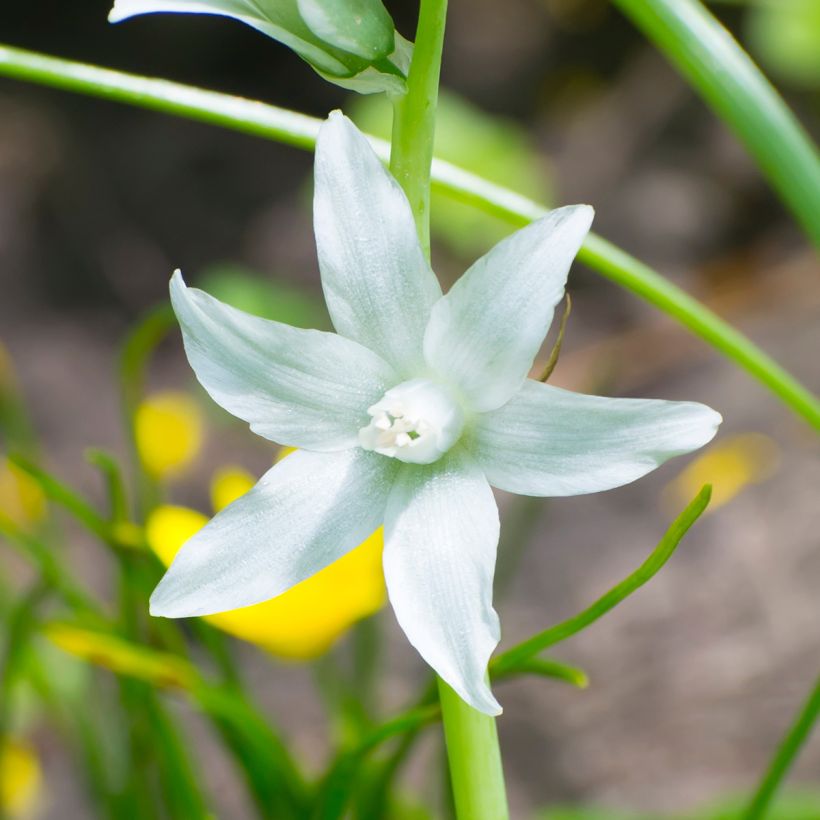

Plant habit
Flowering
Foliage
Botanical data
Ornithogalum
nutans
Asparagaceae
Drooping star of Bethlehem, Nodding star of Bethlehem, Weeping star of Bethlehem
Western Europe
Planting and care
Ornithogalum nutans should be placed in a sunny location in fairly fertile and well-drained soil. Do not place it in a damp corner. It is a thermophilic plant, meaning it requires heat and sunlight while avoiding the scorching rays of the summer sun. However, it can still be grown in light shade. Plant the bulbs at a depth of 8 to 10cm (3 to 4in) and space them 10cm (4in) apart. Place them in a greenhouse in autumn for early flowering. In winter, keep the bulbs dry by using mulch, as the plant is susceptible to bulb rot in case of excess water. It is a disease and parasite-resistant plant. Ornithogalum self-seeds naturally, which is why it can become invasive in mild climate regions. To prevent this, cut the flower stalks as soon as they fade.
Planting period
Intended location
Care
-
, onOrder confirmed
Reply from on Promesse de fleurs
Haven't found what you were looking for?
Hardiness is the lowest winter temperature a plant can endure without suffering serious damage or even dying. However, hardiness is affected by location (a sheltered area, such as a patio), protection (winter cover) and soil type (hardiness is improved by well-drained soil).

Photo Sharing Terms & Conditions
In order to encourage gardeners to interact and share their experiences, Promesse de fleurs offers various media enabling content to be uploaded onto its Site - in particular via the ‘Photo sharing’ module.
The User agrees to refrain from:
- Posting any content that is illegal, prejudicial, insulting, racist, inciteful to hatred, revisionist, contrary to public decency, that infringes on privacy or on the privacy rights of third parties, in particular the publicity rights of persons and goods, intellectual property rights, or the right to privacy.
- Submitting content on behalf of a third party;
- Impersonate the identity of a third party and/or publish any personal information about a third party;
In general, the User undertakes to refrain from any unethical behaviour.
All Content (in particular text, comments, files, images, photos, videos, creative works, etc.), which may be subject to property or intellectual property rights, image or other private rights, shall remain the property of the User, subject to the limited rights granted by the terms of the licence granted by Promesse de fleurs as stated below. Users are at liberty to publish or not to publish such Content on the Site, notably via the ‘Photo Sharing’ facility, and accept that this Content shall be made public and freely accessible, notably on the Internet.
Users further acknowledge, undertake to have ,and guarantee that they hold all necessary rights and permissions to publish such material on the Site, in particular with regard to the legislation in force pertaining to any privacy, property, intellectual property, image, or contractual rights, or rights of any other nature. By publishing such Content on the Site, Users acknowledge accepting full liability as publishers of the Content within the meaning of the law, and grant Promesse de fleurs, free of charge, an inclusive, worldwide licence for the said Content for the entire duration of its publication, including all reproduction, representation, up/downloading, displaying, performing, transmission, and storage rights.
Users also grant permission for their name to be linked to the Content and accept that this link may not always be made available.
By engaging in posting material, Users consent to their Content becoming automatically accessible on the Internet, in particular on other sites and/or blogs and/or web pages of the Promesse de fleurs site, including in particular social pages and the Promesse de fleurs catalogue.
Users may secure the removal of entrusted content free of charge by issuing a simple request via our contact form.
The flowering period indicated on our website applies to countries and regions located in USDA zone 8 (France, the United Kingdom, Ireland, the Netherlands, etc.)
It will vary according to where you live:
- In zones 9 to 10 (Italy, Spain, Greece, etc.), flowering will occur about 2 to 4 weeks earlier.
- In zones 6 to 7 (Germany, Poland, Slovenia, and lower mountainous regions), flowering will be delayed by 2 to 3 weeks.
- In zone 5 (Central Europe, Scandinavia), blooming will be delayed by 3 to 5 weeks.
In temperate climates, pruning of spring-flowering shrubs (forsythia, spireas, etc.) should be done just after flowering.
Pruning of summer-flowering shrubs (Indian Lilac, Perovskia, etc.) can be done in winter or spring.
In cold regions as well as with frost-sensitive plants, avoid pruning too early when severe frosts may still occur.
The planting period indicated on our website applies to countries and regions located in USDA zone 8 (France, United Kingdom, Ireland, Netherlands).
It will vary according to where you live:
- In Mediterranean zones (Marseille, Madrid, Milan, etc.), autumn and winter are the best planting periods.
- In continental zones (Strasbourg, Munich, Vienna, etc.), delay planting by 2 to 3 weeks in spring and bring it forward by 2 to 4 weeks in autumn.
- In mountainous regions (the Alps, Pyrenees, Carpathians, etc.), it is best to plant in late spring (May-June) or late summer (August-September).
The harvesting period indicated on our website applies to countries and regions in USDA zone 8 (France, England, Ireland, the Netherlands).
In colder areas (Scandinavia, Poland, Austria...) fruit and vegetable harvests are likely to be delayed by 3-4 weeks.
In warmer areas (Italy, Spain, Greece, etc.), harvesting will probably take place earlier, depending on weather conditions.
The sowing periods indicated on our website apply to countries and regions within USDA Zone 8 (France, UK, Ireland, Netherlands).
In colder areas (Scandinavia, Poland, Austria...), delay any outdoor sowing by 3-4 weeks, or sow under glass.
In warmer climes (Italy, Spain, Greece, etc.), bring outdoor sowing forward by a few weeks.
































